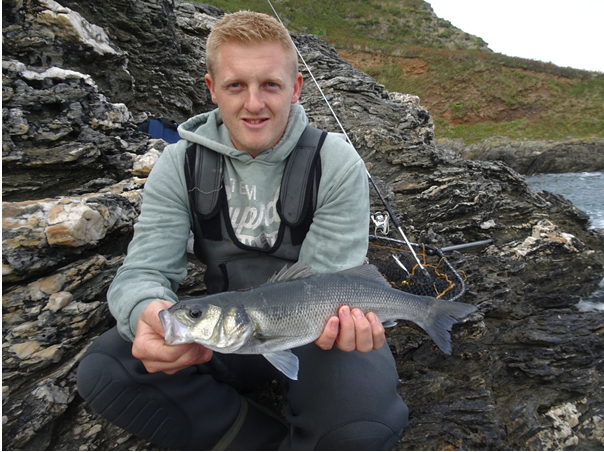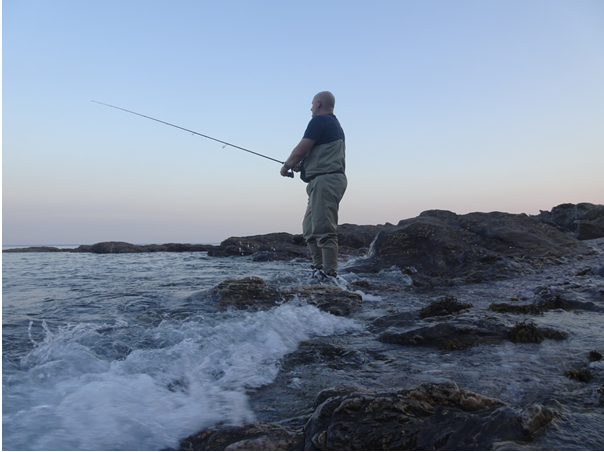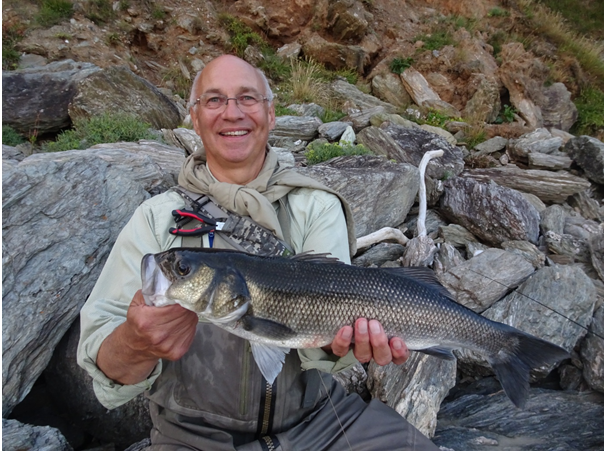Are you a ‘Changer’ or a ‘Mover’...? (Part 3 of 3)
Posted by Marc Cowling (South Devon Bass Guide) on 15th Dec 2018

Many, many times in the past two seasons I’ve had a client say to me either prior to or after landing a bass on a lure “I would have given up on this mark or that bass lure hours ago Marc!”
When should I give up on a mark and move somewhere else? In the final part of this series of three blog posts (Part 1 & Part 2) I offer some suggestions as to when I would remain on a mark or when I would actually move. However, as you’ll find out, there is no ‘golden solution’ to this conundrum...
When to remain
There are most definitely types of marks when the bass can turn up at any time, or to be more precise, at any period in the tide. Headlands, relatively barren beaches and large estuaries are three prime examples as generally speaking there will be vast volumes of water moving past your position constantly. Yes, there will undoubtedly be stages in the tide when bass will either congregate in a certain position or transit through a very specific zone (if you are aware of these ‘places or patterns’ the great) but shoals of smaller bass can be pretty random and the big loners will go wherever the food is or stick to predetermined routes. Therefore, if you’re well situated, and possibly only fishing for a short session, then you might actually increase your odds by staying put and waiting for the bass to come to you.
I would also say that if you don’t know a particular stretch well, but you believe it has potential, then the only way you are going to find out one way or the other is to remain there and find out first hand. Changing the lure to suit the sea conditions and what prey items are lurking there, changing the way it is retrieved or even repositioning yourself on the mark and casting and retrieving at a slightly different angle will all bump up the odds in your favour. Yes, it could take hours and hours of exploration and experimentation over months and even years, but by fishing a mark throughout the entire tide cycle (low-high-low) and attempting it in differing conditions and tide heights is what’s required to fully unlock it’s secrets.

One of 34 bass taken by three of my clients in one session! The mark in question is adjacent to a very powerful tide race in which the bass can turn up at any stage of the tide.
Safety and comfort
Without wanting to teach anyone to suck eggs here, clearly if the circumstances dictate a move, such as the sea conditions (too rough) or weather (lightning) are too dangerous then do so - no bass is worth dying for. Secondly, if the wind is making it too difficult to either remain in sufficient contact with the lure (in order to fish it effectively and doing what it is designed to do) or more than eight out of ten retrieves are resulting in the lure or line being clogged up with weed fragments (regardless of what lure type is attached) then I will move elsewhere, seeking shelter or less troublesome flotsam on another mark.
Decision time
Assuming you are relatively new to this arena, or have been having a torrid time locating bass, the only way(apart from visibly witnessing bass attacking their prey and moving to that area as quickly and safely as possible)that you can confidently decide for yourself that the time is right to give up on a mark and move is by knowing it intimately and when you’ve exhausted all the ‘lure options’ and associated techniques available to you.
Furthermore, there are five more occasions when I will consider moving to an alternative mark - these are:
- If a seal (or seals) are working the same zone of water as me - I just don’t think bass are daft enough to hang around if arguably the only predator they fear is sniffing about although I know some anglers would say the opposite.
- If I am continually catching small pollack at night or small wrasse by day - if these species are getting to the lures it means they feel completely safe and are, at that time, the number one predator on the mark. For the time being anyway...
- If I arrive on the coastline and find conditions that I know from experience just aren’t conducive to catching bass (no point flogging a dead horse!).
- Many of the marks that a client or I (if I’m on my own) will cast a lure into will produce a bass very quickly if the conditions are right. So, if after half-a-dozen cast and retrieves there is nothing doing I will move on and return later in the tide. Sometimes you just need to let bass become established within a feature, with this facet being even more apparent when lure fishing in darkness in very shallow water.
- Sometimes (and this difficult to describe) I just won’t get the right ‘vibe’ about a mark... It could be anything from the water appearing too clear, too murky or just a feeling that the bass are elsewhere.
Choose wisely
If you’re starting out, I would concentrate your efforts on a maximum of six marks for a whole season. If at all possible, attempt to find areas that are different from one another, and importantly, choose wisely. For example, a promontory or headland flanking a beach, the beach itself in daylight and darkness, an estuary mouth, a remote, shallow zone full of rocks and weed (reef), a tennis-court sized patch of reef surrounded by sand or an obvious feature (a gorge, gully, pool/depression) set amongst the reef itself. Moreover, if you’re able to find a variety of marks geographically orientated to face a multitude of directions (north, south, east and west) then this should provide you with options whichever direction the wind blows.

If you’re new to bass lure fishing, having detailed knowledge of a small selection of differing types of marks will be more beneficial than fishing lots of them at random. A methodical approach is key.
I admit some of the above could appear a little draconian, especially if your fishing time is limited or you live a long way from the coast. My advice here is to select a stretch of coastline (100-500 yards long) that you can gain access to and just cast, retrieve and move continually in the course of each session. A surface lure is arguably the most suitable lure choice in this scenario, even more so if you don’t know the area at all and you don’t want to risk losing too many lures. If the bass are present, there is a good chance they will become evident - hopefully via you landing and returning one of these remarkable fish or at the very least a boil, splash or trash at the lure. Many of my ‘best’ bass marks were initially discovered in this manner, and it was only later in my own bass fishing education that I gradually worked out the reasons why the bass were there and the best method to catch them.
With a bit of luck, you may well uncover the ‘holy grail’ which is a section of coastline roughly the size of the proportions mentioned where bass can be caught across the entire flood or ebb. Here, you can just move to each respective mark over the course of a session – this is proper rock hoping, in which you arrive just as you expect the bass to be there or about to turn up. Moreover, it is the reason why many of my own marks are in clusters.

A brute of a bass that was taken by a client of mine on a large surface lure by casting into a very tight region, and one that bass frequent over the high water period, towards dusk only! That is how precise you might need to be, and I remember it was quite a scramble to get here that evening – it was well worth it though!
Summary
To summarise, there is no magic formula or solution, but rather a methodical approach that requires you to assemble a bank of knowledge about individual marks. It goes without saying that if you haven’t caught a bass all season from somewhere you were certain they would reside, and you’ve genuinely covered as many practicable tidal and sea state options without success, then yes, look elsewhere. Ultimately, it is time on the coastline that will assist you to make what needs to be an informed decision, as there isn’t really a shortcut, rather a set guidelines in the first instance and, of course, finding the right venue in the first place - something that is covered extensively in my book ‘The Lure of The Bass.’
Marc Cowling is a successful bass lure fishing guide based in South Devon.
